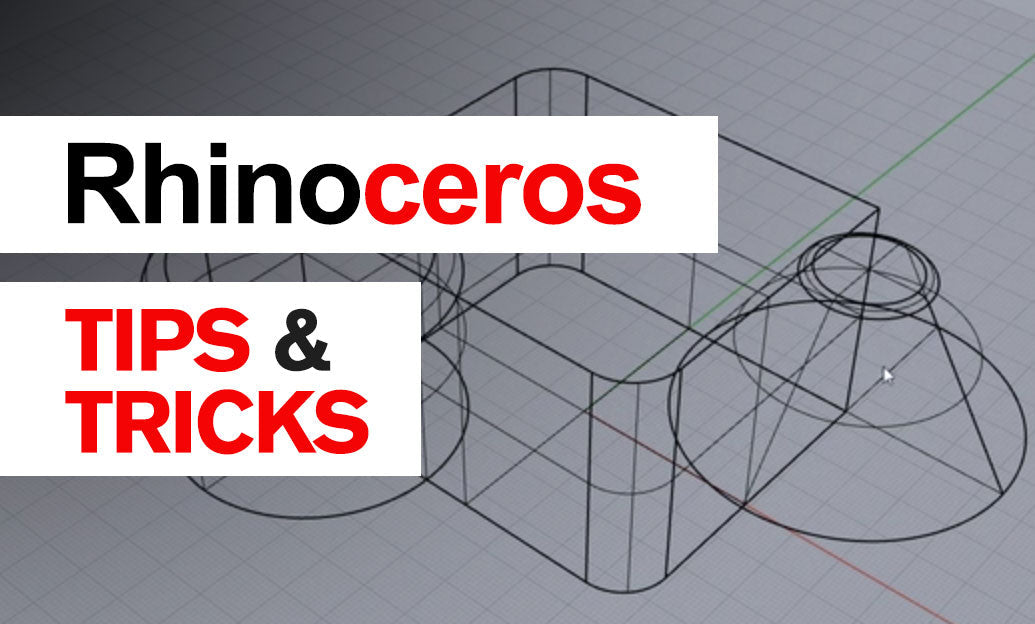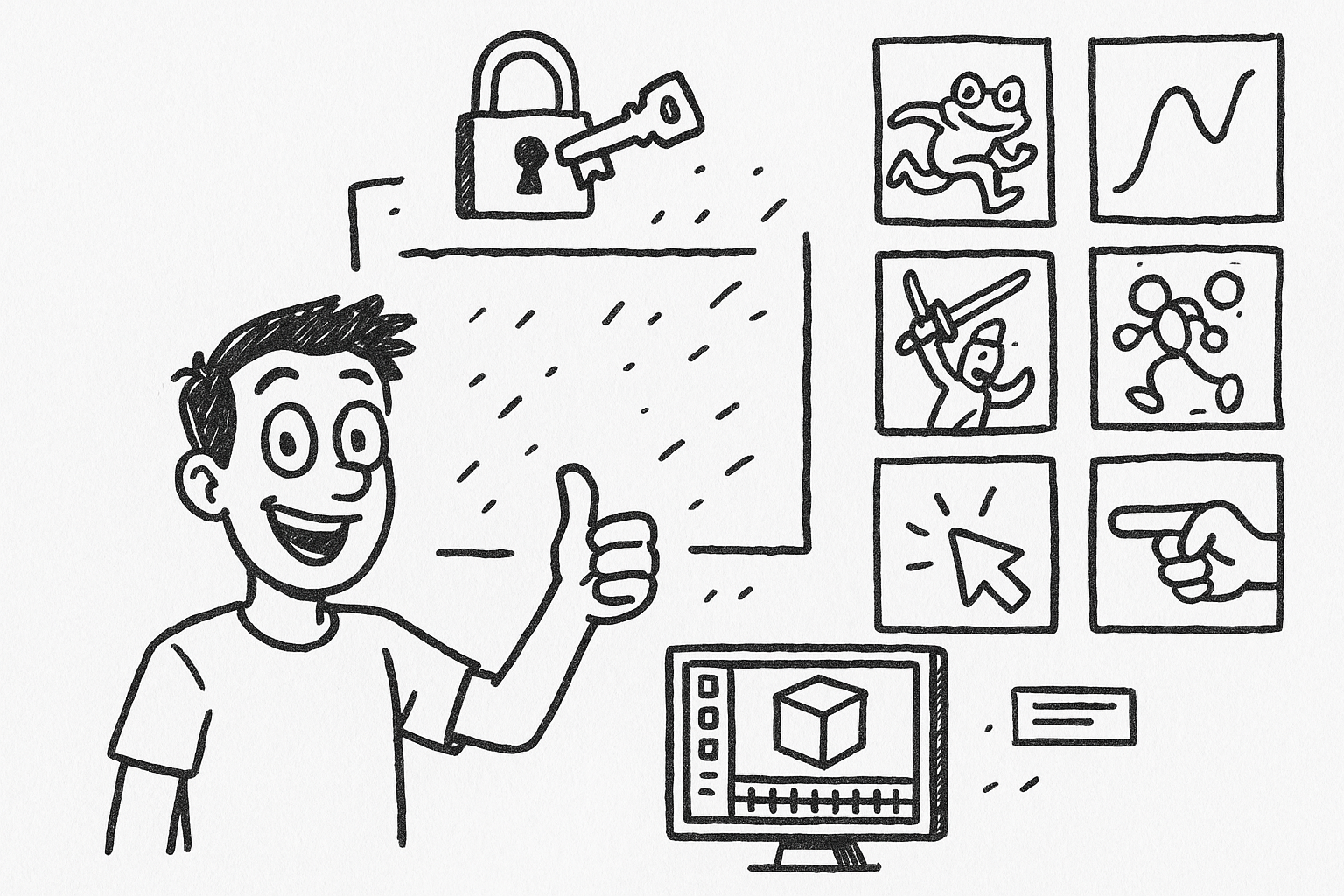Your Cart is Empty
Customer Testimonials
-
"Great customer service. The folks at Novedge were super helpful in navigating a somewhat complicated order including software upgrades and serial numbers in various stages of inactivity. They were friendly and helpful throughout the process.."
Ruben Ruckmark
"Quick & very helpful. We have been using Novedge for years and are very happy with their quick service when we need to make a purchase and excellent support resolving any issues."
Will Woodson
"Scott is the best. He reminds me about subscriptions dates, guides me in the correct direction for updates. He always responds promptly to me. He is literally the reason I continue to work with Novedge and will do so in the future."
Edward Mchugh
"Calvin Lok is “the man”. After my purchase of Sketchup 2021, he called me and provided step-by-step instructions to ease me through difficulties I was having with the setup of my new software."
Mike Borzage
Design Software History: The Evolution and Impact of FreeCAD in Open Source CAD
July 15, 2024 6 min read


The Genesis of FreeCAD
Origins and Vision
FreeCAD originated from the vision of creating a comprehensive, open-source, and community-driven CAD tool. The conceptualization began in the early 2000s when the need for a free, versatile, and extensible CAD software became apparent. The goal was to provide an alternative to costly proprietary CAD software, enabling users to design and engineer in a collaborative and open environment.
The initial development of FreeCAD focused on establishing a robust framework that could support various CAD functionalities. This framework was designed to be flexible, modular, and customizable, allowing users to adapt it to their specific needs. The vision was not just to create a tool, but to build a platform that could grow and evolve with the contributions of its user base.
Key Developers and Contributors
The journey of FreeCAD is marked by the contributions of several key developers and a vibrant global community. Jürgen Riegel, one of the pivotal figures in FreeCAD's development, laid the foundation for the software with his extensive work on its architecture and core functionalities. His vision and dedication were instrumental in steering the project through its early stages.
Werner Mayer and Yorik van Havre are other notable contributors who have significantly influenced FreeCAD's growth. Werner Mayer's expertise in software development and his work on the Part and PartDesign workbenches have been crucial in enhancing FreeCAD's capabilities. Yorik van Havre, with his background in architecture, has enriched FreeCAD with features tailored for architectural design, notably through the Arch workbench.
The global FreeCAD community has played a vital role in its development. Users from around the world contribute code, report bugs, suggest features, and write documentation. This collective effort has transformed FreeCAD from a niche project into a comprehensive CAD tool used by professionals and hobbyists alike.
First Releases
FreeCAD's early versions laid the groundwork for its future development. The initial releases focused on establishing a stable and flexible framework. These versions introduced basic CAD functionalities, such as 2D drafting, 3D modeling, and simple parametric design.
The initial user base comprised mostly of enthusiasts and early adopters from the open-source community. Their feedback was invaluable in identifying bugs, suggesting improvements, and shaping the development roadmap. The iterative process of releasing new versions and incorporating user feedback helped FreeCAD evolve rapidly.
Evolution and Growth
Major Milestones
FreeCAD's journey is marked by several significant milestones that reflect its evolution and growth. Over the years, numerous versions have been released, each introducing new features and improvements. These major milestones have been instrumental in establishing FreeCAD as a powerful CAD tool.
- The introduction of **parametric modeling** was a game-changer. This feature allows users to create models that can be easily modified by changing parameters. It brought a new level of flexibility and efficiency to the design process.
- **Python scripting** integration enabled users to automate tasks and create custom functionalities. This feature opened up new possibilities for extending FreeCAD's capabilities and tailoring it to specific workflows.
Technological Advancements
FreeCAD has benefited from several technological advancements that have enhanced its performance and capabilities. One of the most significant advancements was the adoption of the **OpenCASCADE geometric kernel**. OpenCASCADE is a powerful and versatile geometry engine that provides advanced modeling algorithms. Its integration into FreeCAD enabled more complex and precise modeling operations.
The development of various workbenches has also been a key factor in FreeCAD's growth. The **Part** and **PartDesign** workbenches, for example, introduced sophisticated tools for creating and modifying solid models. Other workbenches, such as **Draft** and **Sketcher**, expanded FreeCAD's capabilities in 2D drafting and constraint-based sketching.
Community Influence
The FreeCAD community has been a driving force behind the software's development. User feedback has played a crucial role in shaping the software, highlighting areas for improvement, and suggesting new features. The community's involvement is facilitated through forums, mailing lists, and discussion platforms where users and developers collaborate and share ideas.
Community contributions are not limited to code. Users also contribute by creating tutorials, writing documentation, translating the software into different languages, and providing support to other users. This collaborative environment has fostered a sense of ownership and investment among users, further strengthening the FreeCAD project.
Core Features and Capabilities
Parametric Modeling
Parametric modeling is one of FreeCAD's core features and a significant advantage over traditional CAD tools. This design approach allows users to define models in terms of parameters and constraints, making it easy to modify designs without starting from scratch. For example, changing the dimensions of a part will automatically update all dependent features, ensuring consistency and accuracy.
In FreeCAD, parametric modeling is implemented through the use of features such as constraints and dimensions. Users can create sketches with geometric constraints and then use these sketches to build 3D models. This methodology enhances the design process by providing greater control and flexibility.
Modularity and Extensibility
FreeCAD's architecture is designed to be modular and extensible, allowing users to customize the software to meet their specific needs. The concept of **workbenches** is central to this modularity. Workbenches are collections of tools and functionalities focused on specific tasks or domains. For example, the **Arch** workbench is tailored for architectural design, while the **FEM** workbench provides tools for finite element analysis.
- The **Part** workbench offers tools for creating and editing basic 3D shapes and performing Boolean operations.
- The **PartDesign** workbench adds advanced features for creating parametric parts with sketches and constraints.
- The **Path** workbench focuses on generating toolpaths for CNC machining.
This modular approach allows users to load only the workbenches they need, keeping the interface uncluttered and the software lightweight. Additionally, users can create their own workbenches or extend existing ones, thanks to FreeCAD's extensible architecture and Python scripting capabilities.
Integration and Interoperability
FreeCAD is designed to be highly compatible and interoperable with other software and file formats. This interoperability is essential for integrating FreeCAD into various workflows and ensuring seamless data exchange. FreeCAD supports a wide range of file formats, including **STL**, **STEP**, **IGES**, and others, making it easy to import and export models.
Python scripting is another powerful feature that enhances FreeCAD's integration and extensibility. Users can write scripts to automate repetitive tasks, create custom tools, and integrate FreeCAD with other software. This scripting capability opens up endless possibilities for customization and automation, making FreeCAD a versatile tool for diverse applications.
Impact and Future of FreeCAD
Influence on the Open Source CAD Community
FreeCAD has had a profound impact on the open-source CAD community. It has established itself as a leading open-source CAD tool, offering a robust and flexible alternative to proprietary software. In comparison to other open-source CAD tools like **LibreCAD** and **OpenSCAD**, FreeCAD stands out for its comprehensive feature set and parametric modeling capabilities.
FreeCAD's success has also promoted the principles of open-source development in the CAD domain. By providing a free and open platform for design and engineering, FreeCAD has empowered users to take control of their tools and contribute to their evolution. This collaborative approach has fostered innovation and community-driven development, setting a precedent for other open-source CAD projects.
Real-World Applications
FreeCAD is used by professionals and hobbyists across various industries, including architecture, engineering, and education. Its versatility and extensibility make it suitable for a wide range of applications, from designing complex mechanical parts to creating detailed architectural models. Testimonials from users highlight the impact of FreeCAD on their workflows, emphasizing its flexibility, cost-effectiveness, and community support.
Future Prospects
The future of FreeCAD looks promising, with ongoing development and a dedicated community driving its evolution. Upcoming features and enhancements are regularly discussed within the community, with a focus on improving usability, performance, and functionality. Some of the planned enhancements include better support for complex assemblies, improved user interface, and enhanced simulation capabilities.
Community projects and initiatives continue to play a crucial role in FreeCAD's development. Collaborative efforts such as documentation drives, bug bounties, and feature sprints help accelerate progress and ensure that FreeCAD remains a cutting-edge tool. The vision for the future is to maintain FreeCAD's position as a leading open-source CAD platform, continually evolving to meet the needs of its diverse user base.
Also in Design News

Rhino 3D Tip: Understanding Surface and Solid Modeling in Rhino for Enhanced Workflow Efficiency
August 30, 2025 3 min read
Read More
Unlocking Advanced Animation Techniques: Five Studio-Proven Tricks to Elevate Your 3ds Max Workflow
August 30, 2025 6 min read
Read MoreSubscribe
Sign up to get the latest on sales, new releases and more …



